In this post: find out what is Shinto, who is Inari, why the foxes, how it all comes together in Fushimi Inari Taisha; when is the best time to visit the gates to avoid crowds and snap the best photos.
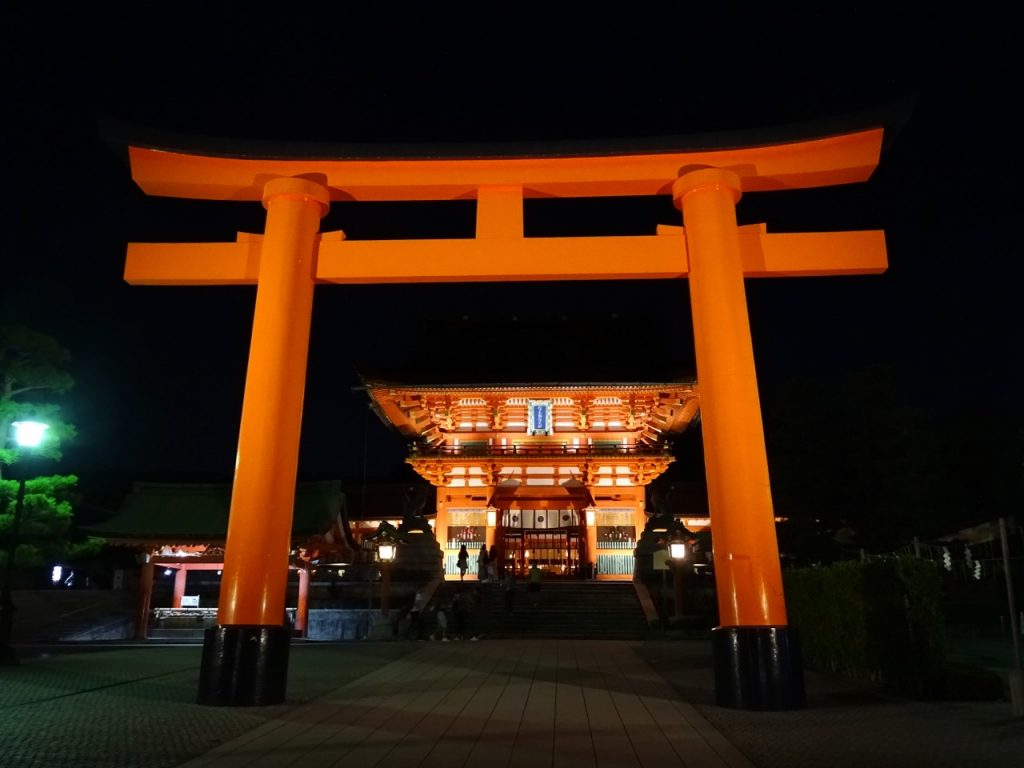
Fushimi Inari Taisha is a celebrity among Japanese shrines. Its seemingly endless succession of vermillion gates (torii) forms a fiery necklace around the mountain that is akin to Elizabeth Taylor’s diamonds or John Lennon’s glasses. Just mention it and “Oh, I know what you are talking about” response guaranteed. Instant recognition ✔️. Worldwide reputation ✔️. Humongous crowds of adoring fans ✔️.
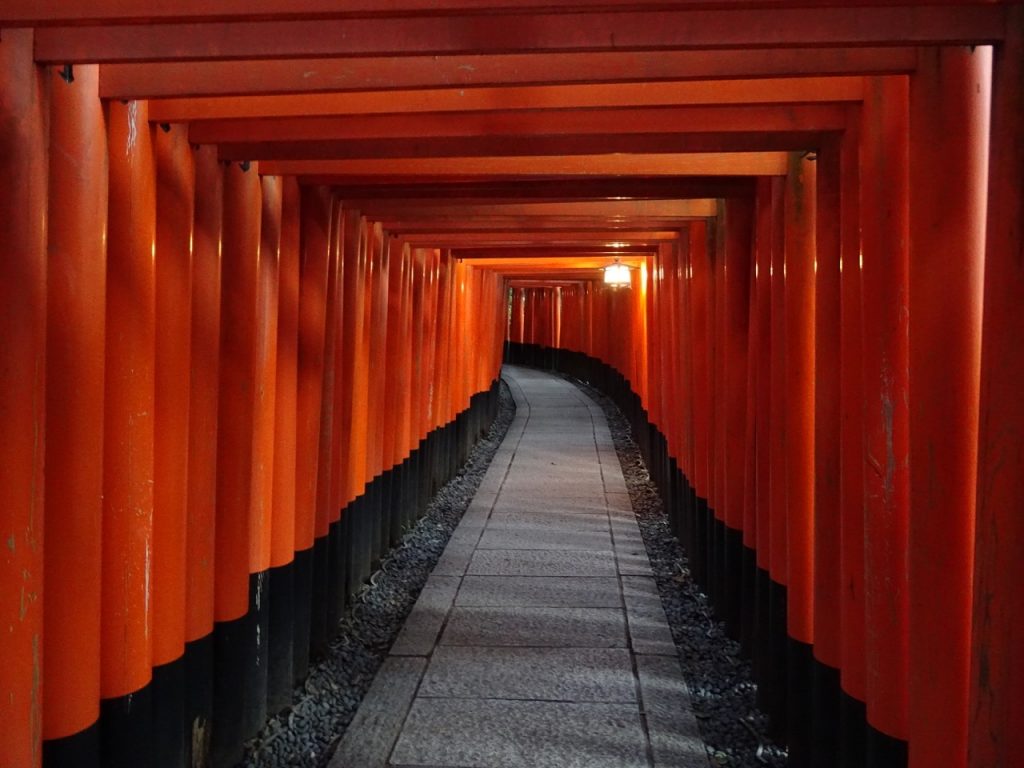
I wasn’t planning to write about Fushimi Inari. What new could I bring to the mix of knowledge already disseminated through historical documents, fiction and poetry, glossy travel magazines, blogs and tourism brochures? Evidently, I changed my mind. I realized that some basic questions were seldom addressed in English-language publications. Even Wikipedia, my go-to source of information, failed to help. For example, for a person not very well versed in the Japanese past, even the name presents some mystery. The site in interchangeably referred to as Fushimi Inari or Fushimi Inari Taisha. Why?
What is Taisha?
Initially, Taisha referred to the particular shrine called Izumo-Taisha situated in Shimane Prefecture. It is one of the most ancient and important Shinto shrines in Japan.
By the end of the 19th century, the meaning of the word had changed. Taisha, as a part of the name, means a collection of shrines and other spiritually important sites grouped together.
I was skeptical about visiting Fushimi Inari Taisha. The effects of overtourism are painfully present in Japan, and the place is the poster child of this phenomenon. Why? Almost every shrine in Kyoto has an entrance fee. Fushimi Inari Taisha is free. Every gate, large and small, was donated by an individual, a family, or a business. Who would dare to charge them a fee when they decide to visit.
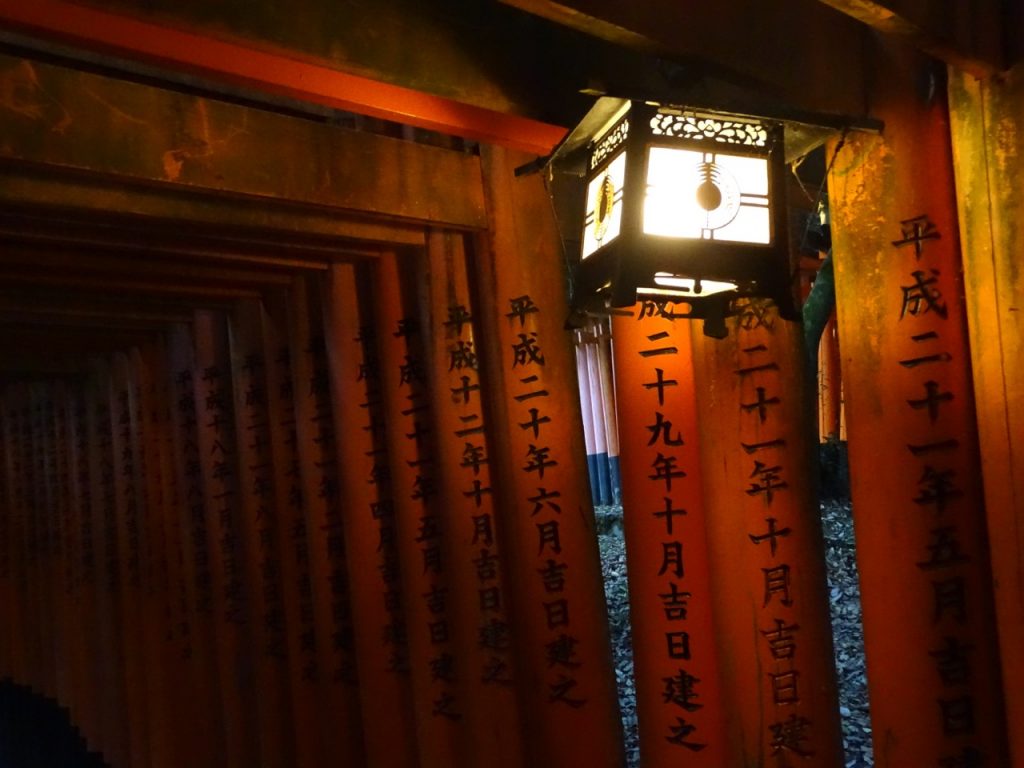
A: Yes, you can. Here is the pricing list.
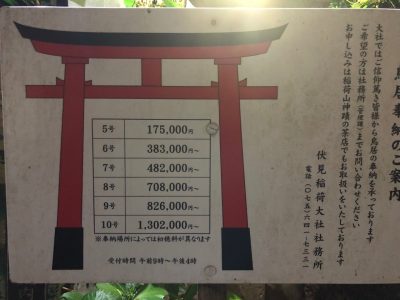
Waiting in line to hastily snatch a picture in front of the gates followed by moving through them at snail’s pace is the recipe for disappointment. Yet, it would be inconceivable to miss once in a lifetime opportunity to see this unique landmark? I was torn.
Remember Buridan’s ass? Finally, I got my internal donkey under control and decided to go there later in the day to minimize the chance of huge crowds.
It worked!
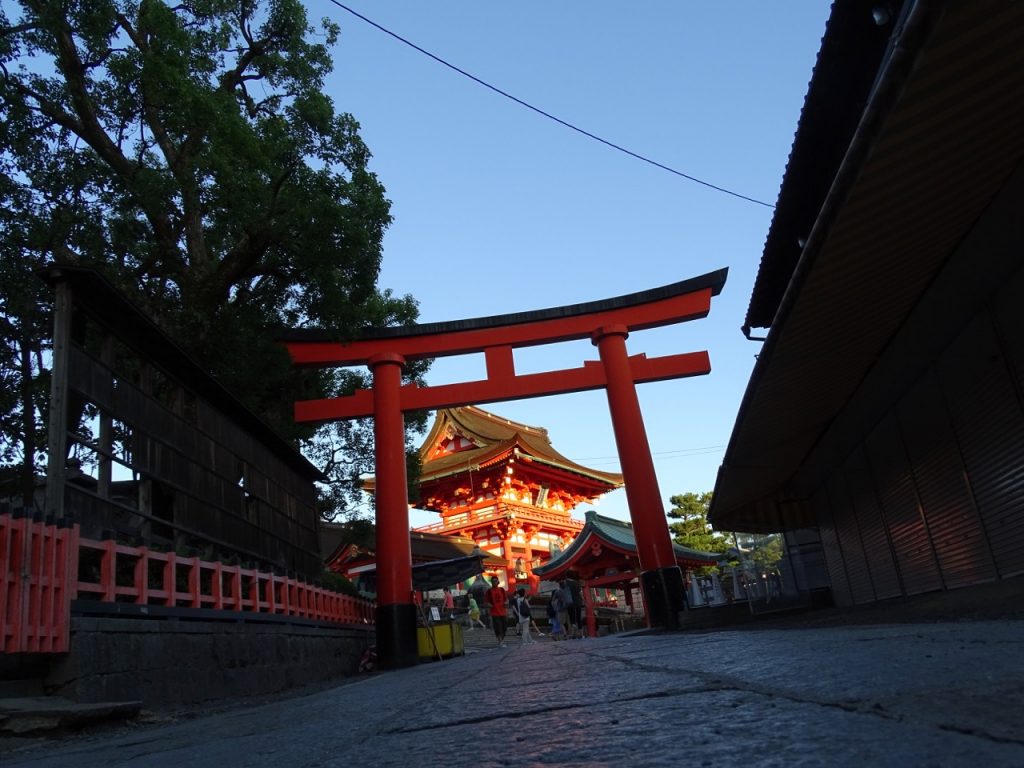
Fushimi Inari Taisha grounds are always open. However, street food and souvenir vendors camping out around the entrance leave closer to the sunset. Eateries and small shops further along the way are closing by the same time too. With the dusk settling in, the crowds beginning to disappear. Wave after wave, people were descending the steps leaving the grounds. The one-directional flow was so intense that for a few minutes it looked like the shrine was closing down for a day.
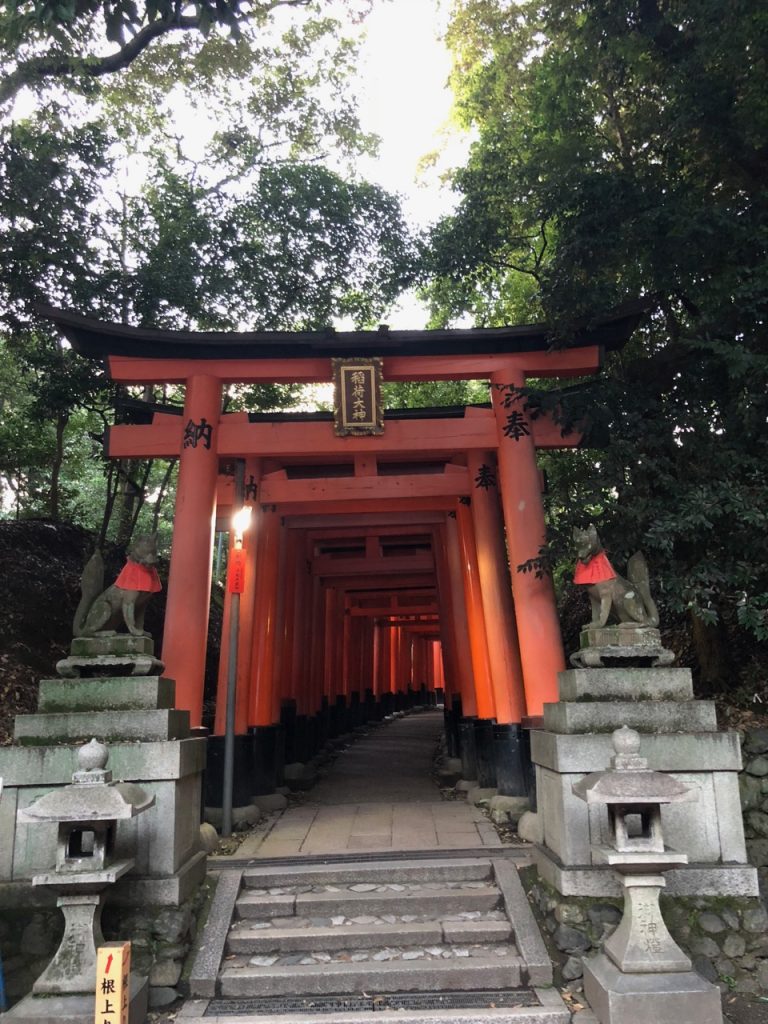
Then, the remarkable transition happened. The quietness enveloped the mountain. It was not entirely dark yet, but lonely shapes of late visitors morphed into fairytale-like silhouettes. The artificial lights, seldom inside and mostly outside of the gates, create an intricate pattern of shadows.
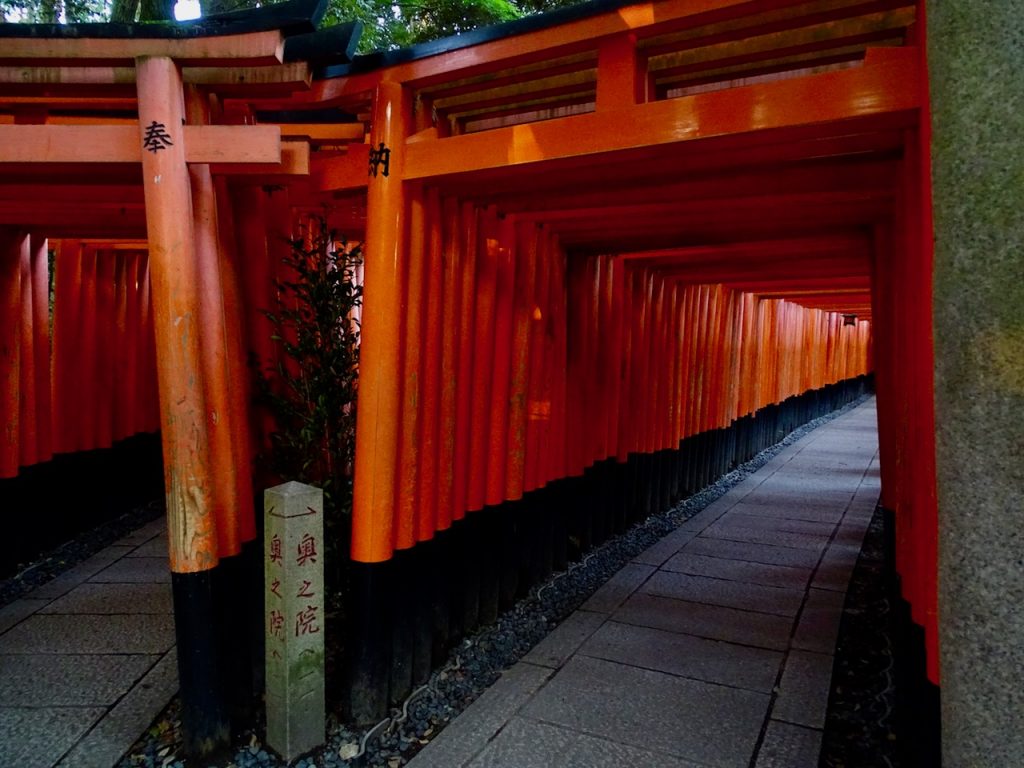
Some say that the best time to come is early in the morning. Emptiness is good. You can get that coveted shot of the bright red arcade of the gates without any living soul around. However, if you like mystery and looking for a truly unique experience come at night when the shadows descend on the mountain slopes, and the gates play a hide-and-seek game with ancient lanterns.
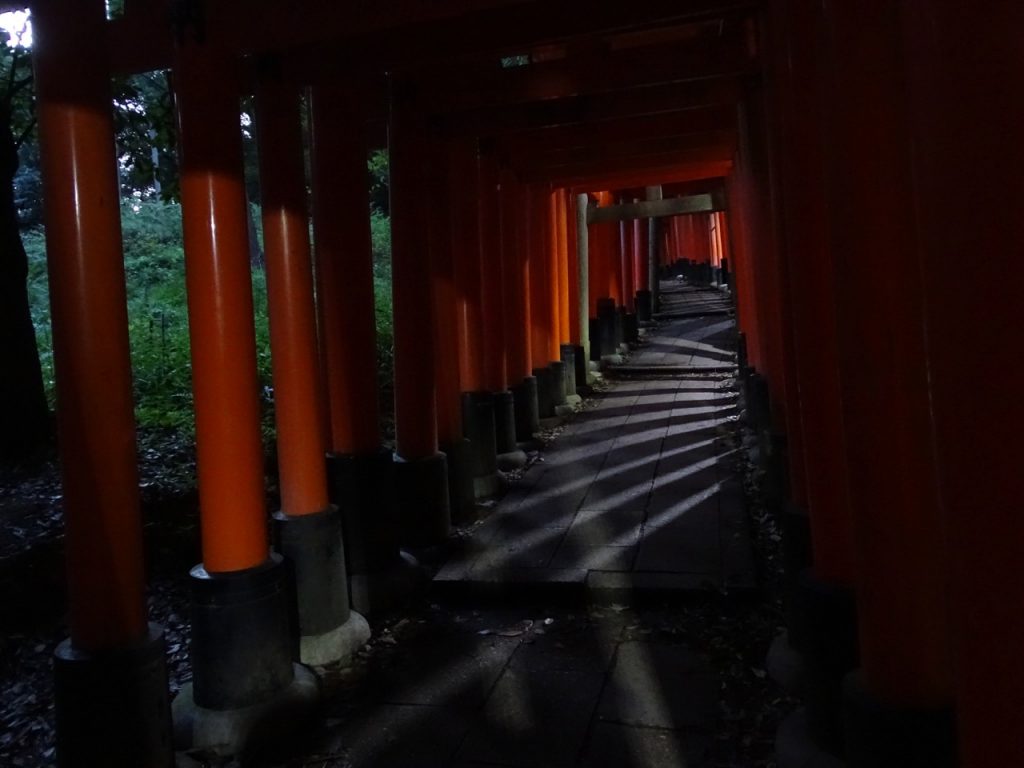
What is Shinto, who is Inari, why the foxes, how it all comes together in Fushimi Inari Taisha
Let’s get acquainted with a bit of terminology here. The information below partially comes from more than two decades of works and research of Mark Schumacher available on his website.
Is Shinto a religion? There is a disagreement about that. Shinto is a system of beliefs and traditions. Above all, Shinto is the profound expression of the ancient culture of the Japanese people. Shintoism worships kami (deities or spirits), essentially supernatural entities, which exist in a parallel dimension but are able to enter ours and affect the course of nature.
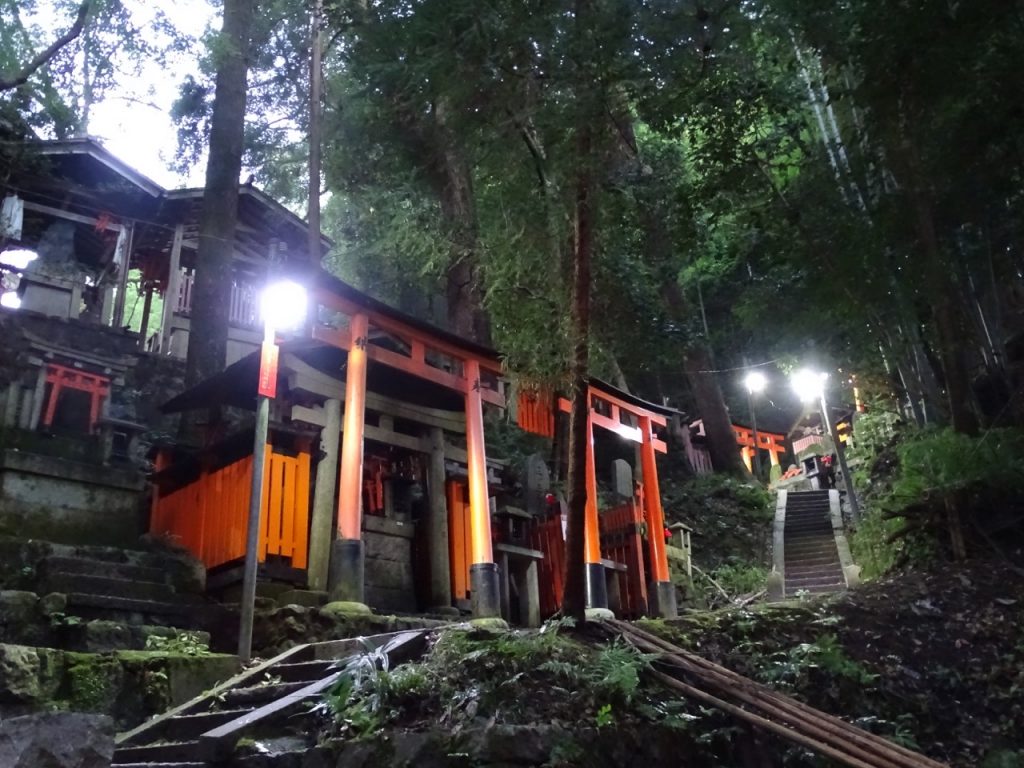
Inari (aka Oinari) is the kami of foxes, fertility, rice; tea and sake; of agriculture and industry; of general prosperity and success. Inari is one of the principal kami of Shinto. In earlier Japan, Inari was also the patron of swordsmiths and merchants. Represented as male, female, or androgynous, Inari is sometimes seen as a collective of three or five individual kami. The preferred gender varies according to regional traditions and personal beliefs.
Inari is closely associated with the kitsune (fox) kami, known as the Inari’s messenger. Inari is also commonly identified with Uka no Mitama no Kami, the Shinto patron kami of agriculture and grain. Inari lore is quite complicated and confusing, and some think the deity represents a hybrid Shintō-Buddhist divinity.
Inari’s foxes (aka kitsune) are pure white and act as Inari’s messengers. There are several theories on how the kitsune became Inari’s servants. The first is a myth in a Buddhist text from the 14th century telling a story of a family of foxes who traveled to the shrine at Inari Mountain to offer their services to Inari. Inari granted their request and placed them as the attendants of the shrine. Another theory comes from the behavior of real foxes. They are often seen in and around rice fields during the growing season eating the rodents that would otherwise destroy the rice. This lifestyle gave them the image of the guardians of the fields.
There are about 30,000 Inari shrines in Japan. Curiously, most Japanese no longer distinguish between the god (Inari) and the messenger (fox) – for all practical purposes, the two have morphed into one.
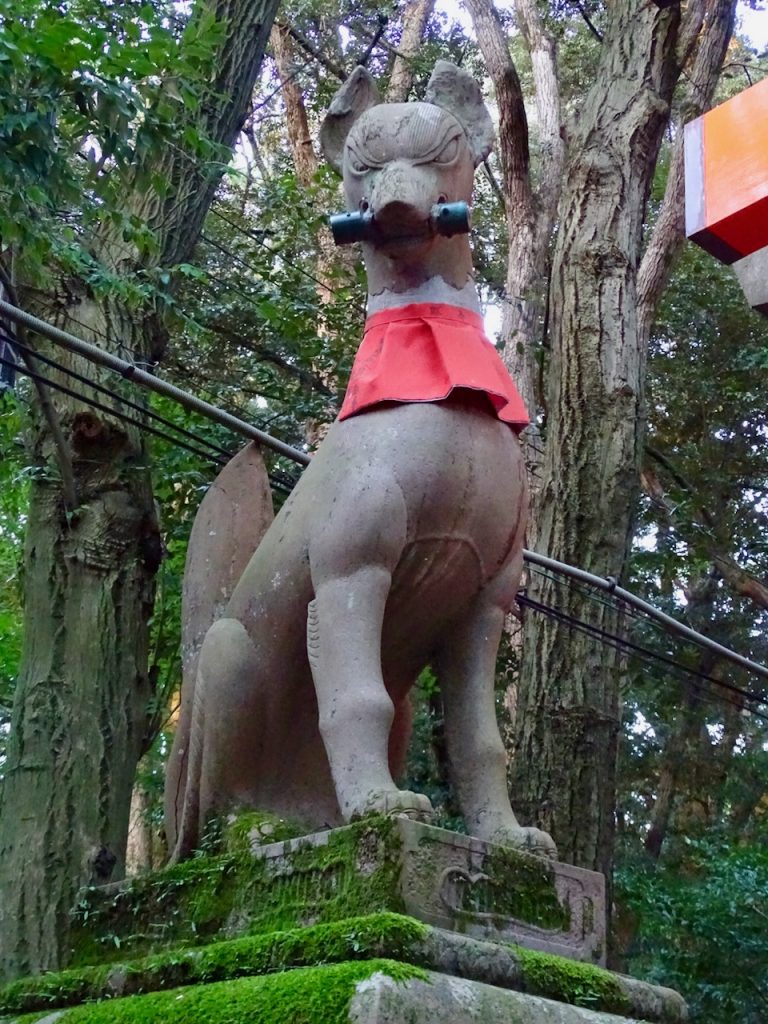
Fushimi Inari Taisha, which dates back to 711 AD, is the first and the oldest Inari shrine. It is the headquarters of all Inari shrines in Japan and enshrines the spirit of Uka no Mitama. Visitors must pass through more than 10,000 vermilion gates to reach the inner sanctuary. Fushimi Inari Taisha is also one of Japan’s most popular shrines. It attracts some 2.5 million visitors during the first three days of the New Year holiday.
Torii literally means Bird Perch. Shrines always have gates called torii that stand at the entrance to the sacred area around the shrine. Torii doesn’t necessarily positioned at the actual entrance to a shrine but could be used to mark an area believed to have a deep religious meaning.
Useful tips
- Fushimi Inari Taisha official website
- how to get there
- if you are coming after the sunset, do not forget mosquito repellent
- if you are planning to walk all the way through the gates up and down the mountain, do not forget to take water with you.
- check the train schedule first if you decided to come earlier or late in the day.
- visiting Fushimi Inari is fun… in proper shoes. You will be doing quite a bit of walking, so adjust your fashion choices accordingly.
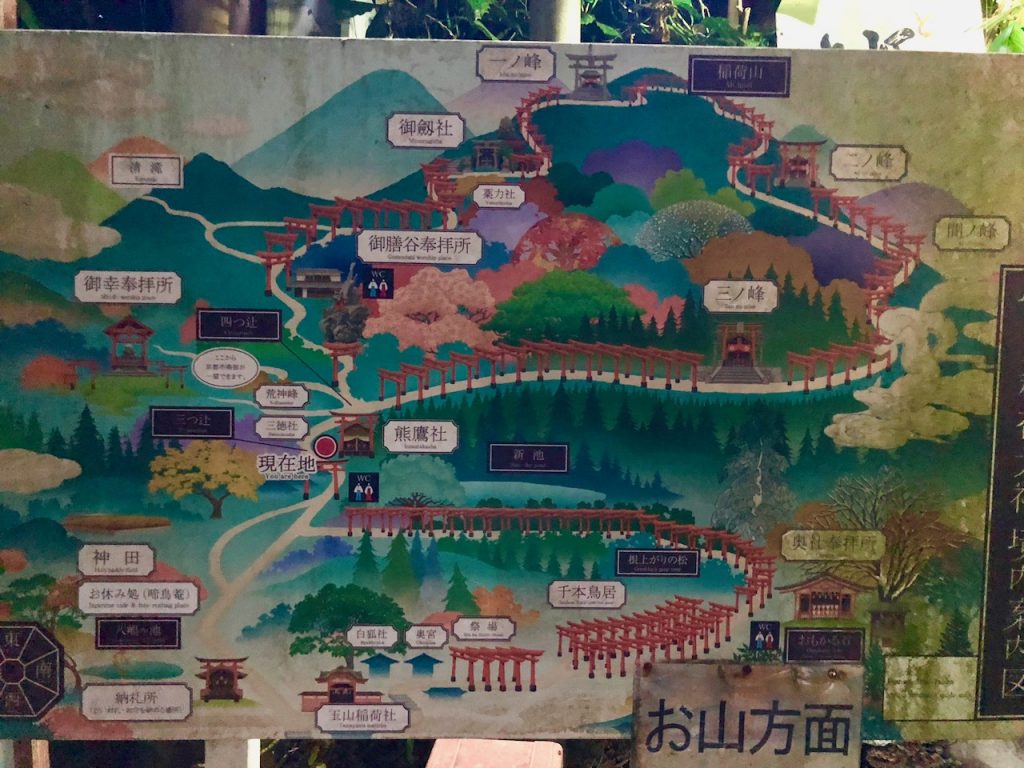

Enjoy!
Share this article on Pinterest by clicking Save button
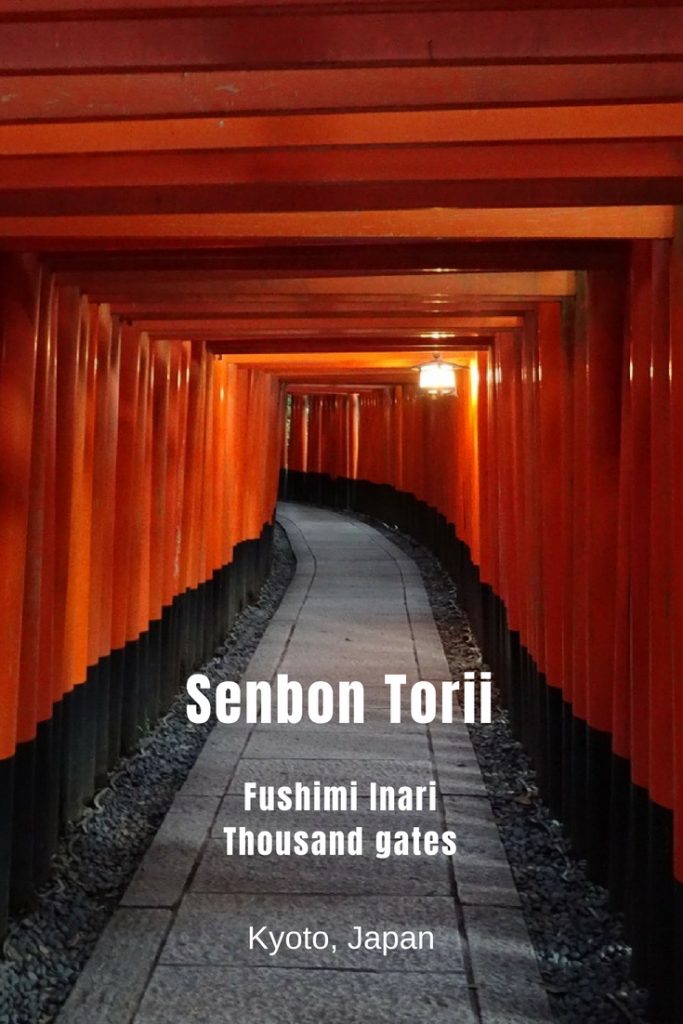
Japan is something magical. Never felt so peaceful and safe as in this country. As soon as you leave Japan, you want to come back again! Inari is not an exception.
Can’t stop exploring this beautiful corner of the World! 🙂
Thank you Elena!!!
The Messenger looks so incredibly regal Elena. How stately. Japanese temples amaze me, for their cleanliness and attention to detail. I spent 2 hours in the country at the airport in Osaka and was beyond impressed. I cannot wait to visit. Pinned and Tweeted.
Ryan